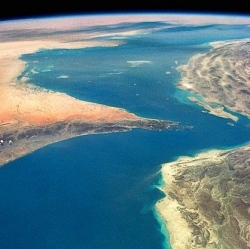
India has successfully launched a new communications satellite for South Asia from Sriharikota space centre. The satellite, funded entirely by India, is aimed at helping regional countries boost their telecommunication and broadcasting services. Sri Lanka, the Maldives, Bangladesh, Nepal and Bhutan will benefit from this satellite. But Pakistan has opted out.
Analysts have called the launch Indian PM Narendra Modi’s "space diplomacy". In a tweet, Mr Modi congratulated the scientists on the launch, saying he was "very proud of them".
The Indian Space Research Organisation (ISRO) took three years to build the satellite, which was launched by its reliable Geo-synchronous Satellite Launch Vehicle (GSLV).
The South Asia Satellite has 12 Ku band transponders which India’s neighbours can use to improve their communications services. Each country will get access to at least one transponder, but they will have to develop their own ground infrastructure.
The satellite is also capable of providing crucial communication links between the nations in times of natural disasters.
Mr Modi has called this satellite an "invaluable gift" to India’s neighbours. This "gift" from India has no parallels in the space-faring world. All other current regional consortia are commercial for-profit enterprises.
So it seems Mr Modi is placing the ISRO in a new orbit by providing this space-based platform that would have cost the participating nations almost $1,500m (£1,158m).
According to the government, the satellite will enable a full range of services to India’s neighbours in telecommunication and broadcasting areas such as television, direct-to-home (DTH) services, education, telemedicine, weather forecasting and disaster management support.
But will India’s strident regional space diplomacy yield results? There is no doubt the country is actively trying to counter China’s growing influence over its neighbours through this satellite. But in the 21st Century space race in Asia, China already has the first-mover advantage.
The region experiences frequent earthquakes, cyclones, floods and tsunamis.
A South Asia satellite will help the countries co-ordinate rescue efforts and have a secure line of communication during disasters.
